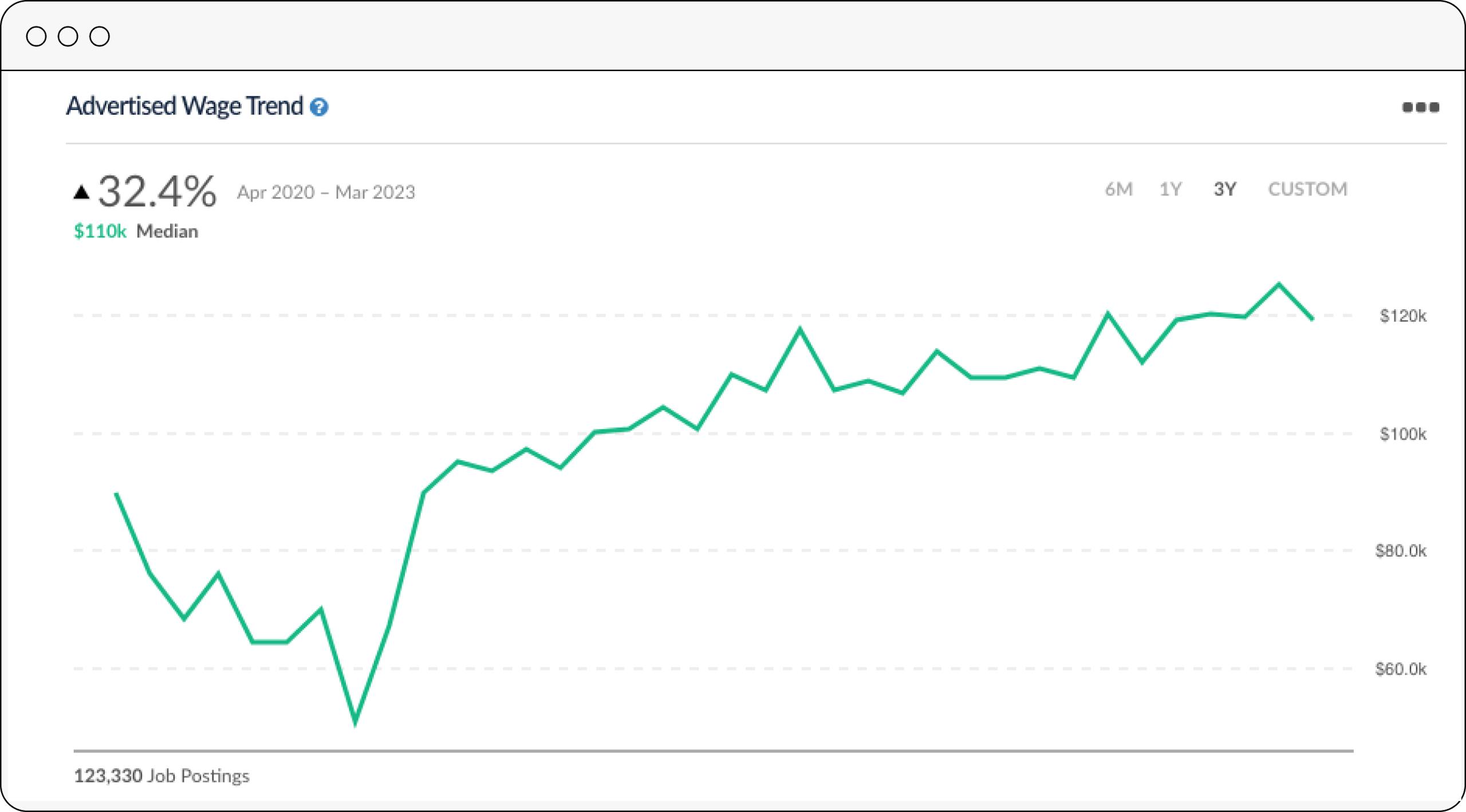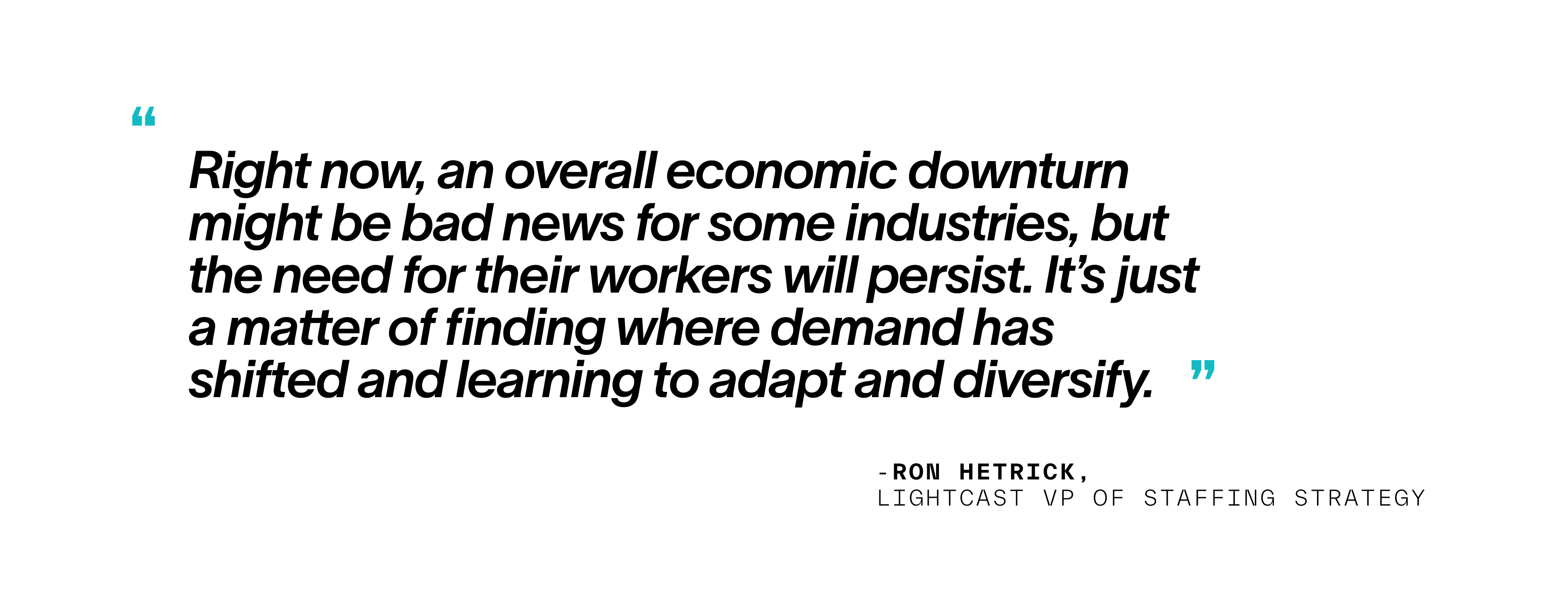As a staffing company, it’s important to keep tabs on the labor market, know what’s really happening, and look beyond just the headlines. When you inform your next move with real-time, unbiased data, you can make the best decisions and the most of your time.
Here at Lightcast, we have those insights. That’s why we’re kicking off our series, The State of Staffing, starting with tech. We’re going to focus on top-of-mind verticals in staffing, give you an overview about key occupations in each industry, who’s hiring, what they’re paying, and how the vertical's competitive landscape is changing over time.
So, what’s going on with the tech industry?
We’ve all heard about the tech layoffs lately. Meta recently announced a new round of layoffs as they plan to let go of another 10,000 employees, and Amazon is cutting 9,000 more jobs to eliminate about 27,000 positions when they’re all said and done.
But this is just part of the story. The layoffs that have been blowing up headlines are just a fraction of the five million strong tech workforce. These highly qualified people are now available, seeking new jobs, and finding them. Often forgotten, small to medium-sized businesses drive much of the job growth in the US, and tech is no exception. Additionally, tech jobs are both a vertical (a specific industry) and a horizontal, which means companies from every industry employ them in some capacity. Our world is dependent on technology, so people who have tech skills and those who can perform tech jobs will stay in high demand.
No matter what the headlines say, there will always be IT demand.
As companies respond to digital transformation, the need for IT workers will continue to increase. Computer and IT occupations are projected to grow 15 percent from 2021 to 2031. For our purposes, let’s take a closer look at a group of 20 core computer and mathematical occupations. This includes occupations like Software Developers, Database Administrators, and Computer User Support Specialists. According to Lightcast postings data, in the last year, there were 4.37 million job postings in the US for these roles, with an average of about 336,000 monthly postings. While postings over the last year have seen a negative growth trend, it’s important to consider trends over time, as these fluctuations in demand are common.

Seventy-five percent of these job postings are outside of the tech industry.
Companies in every industry need tech workers. Currently manufacturing has 31,000 IT job openings across the US, which is 6,000 more than prior to the pandemic. And this trend is seen in other industries. In finance and insurance, there are over 24,300 job openings, which is about 3,000 more than prior to the pandemic. Retail trade, healthcare, and educational services are all seeing similar trends toward an increased demand for IT workers.
Wages for IT occupations are competitive and increasing outside of the tech sector.
Outside of big tech, companies are offering competitive wages to attract the IT talent they need. Across all industries, the median advertised salary over the last year was $107,500. In the technology sector, this wage was $110,000. Looking beyond IT, wages are even higher in some industries. In manufacturing, the median advertised salary was $115,600. And since April of 2020, wages for tech roles in manufacturing have increased 32.4%. This goes for IT job postings in finance and insurance too, with the median advertised salary exceeding $120,000 and advertised wages increasing by 46.7% over the last three years. In the administrative and support sector, advertised wages are even greater with an average annual salary of nearly $125,000.

The IT occupation with the greatest employment and highest level of job postings is Software Developer.
There are 1.5 million Software Developers in the US. Some top job titles associated with this occupation are Software Engineers, Systems Engineers, and Software Developers. With over 77,300 job openings in the US for these roles, these people continue to be in high demand. The national median advertised salary is just over $125,000, and these advertised wages have increased 8.1% over the last three years. Now let’s compare postings for this specific occupation in different industries. In the tech sector, the median advertised salary is $121,100, and postings in the manufacturing sector have a similar compensation level. However, since April 2020, wages for Software Developers in manufacturing have increased 17.7% as opposed to 7.5% in the tech sector. In the administrative and support sector, the median advertised salary is $135,900 with an increase of 7.3% over the last three years.

Job postings, advertised wages, and growth… What does this mean for IT occupations and staffing for them?
A key takeaway from this type of data is it shows us that taking a broad view of the labor market illuminates opportunities. While one industry might be cooling off, another could be heating up. Using clear and concise data to navigate these labor market complexities allows staffing companies to make better decisions. Consider wages, for example. It’s not just who’s hiring or if high profile companies are announcing layoffs, but also what they’re paying. While there may be a perception that wages outside of big tech aren’t as competitive, the opposite is true for multiple industries that have IT demand and use staffing services to address it. There are multiple factors at play in every staffing decision, so make sure you consider the whole picture using data.




